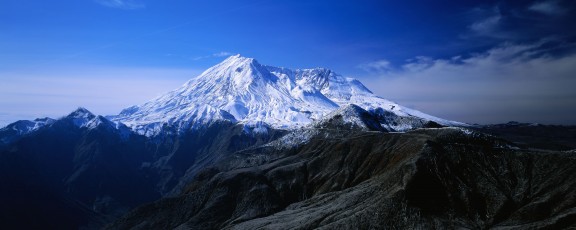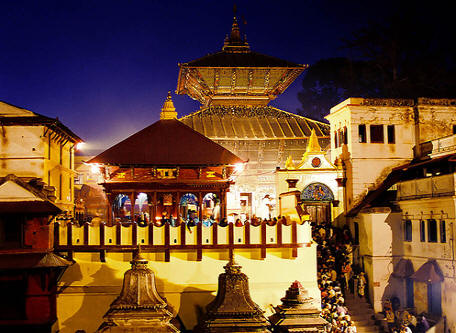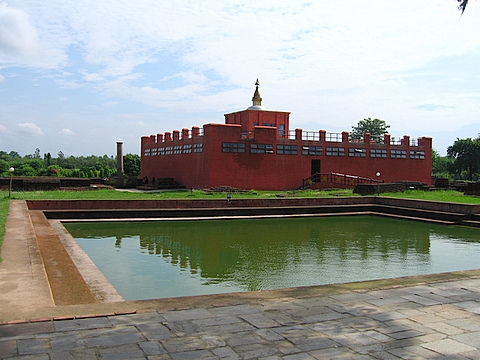The folk music represents the culture of a certain place and
race. Each community has its own culture and tradition, and is associated with
its common or peculiar musical instrument s. Such musical instrument s differ according to
the place and caste. Kin and jhyali are the common musical instrument s of the
Newar community living in the Kathmandu valley and other cities of Nepal.
Yalamber is a popular musical instrument of the Kirants of eastern Nepal.
Sarangi is a typical musical instrument of Gandarva community of Pokhara.
Damphu is an essential musical instrument of Tamang. Panchai Baja is played by
Damai community during the wedding ceremony.
Along with folk songs, various musical instruments are also
played in different festivals, jatras and ceremonies in Nepal. Like folk songs,
musical instruments also differ according to place, race, religion and culture.
A brief introduction of musical instruments played in Nepal.
Madal: It is
one of the most popular musical instruments of the Nepalese community. This
musical instrument was first used by the Magar community. Later on, it gained
popularity throughout the country. It is made by making a hollow (big hole) in
a piece of thick log and its both open sides are covered with skin. It is
carried around the waist and played by both hands.
Sarangi: It
is a traditional musical instrument of the Gandarva community of Kaski
district. It is made of Khiri wood. It has four wires and is played by rubbing
and bow on the wires. The people of the Gandarva community play the Sarangi
along with there own local songs that talk about the various incidents that
happened in the country.
Flute(Bansuri/Murali):
It is made by making a hole in a small piece of hollow bamboo pipe. It is a
popular musical instrument throughout the country. It is played by blowing air
with our mouth.
Jhyali/Jhyamta/Jhurma:
It is one of the musical instruments of Panchai Baja. It is made of bronze
metal. It is played with our both hands.
Narasingha:
It is a also one of the musical instruments of Panchai Baja, and is made of
copper. It is long and curved like a half circle.
Sahanai: It
is also a part of Panchai Baja. It is made of metal and played by blowing air
with our mouth.
Nagara/Damaha;
It is also one of the musical instruments of Panchai Baja. It is like a Nagara
but small in size.
Tyamko: It
is made up of large shell of the conch found in the sea and ocean. It is played
by blowing air with our mouth. It is played during puja and other religious
ceremonies of the Hindus. It is also blown when dead body is taken to the ghat
for cremation.
Khainchadi:
It is made of wood covered with skin and is played when Roila, Balana, etc
songs are sung. It is also played during Bhajan-kirtan by hindus.
Pungi: It is
made of coconut shell and a hollow bamboo pipe. It is played in the terai to
show the snake dance.
Yalamber: It
is made of bamboo with two wires. It is used by the kirant community.
Tunga: This
is a popular musical instrument used in the Himalaya region. It is made from rhododendron
wood and has four wires like the sarangi.
Ekatare: It
is used by the sages and ascetics. It is made of wood, leather and string.
Urni: It is
used by the Dhimal community and made of the bark of coconut, skin and stick.
Dhol/Dholak:
It is made of wood which is hollow inside and is covered with leather.
Shringinad:
It is made of the horn of Krishnasar and is used by the sages.
Phasmuk: It
is used in Limbu community and made of three pieces of bamboo.
Dhyangro: It
is used by a witch doctor like Dhami-Jhankri and made of wood and leather.
Hudko: It is
like a Dhamaru and used in the Mid-western and Far-western regions.
Pung: It is
made of the horn of an ox and is popular among the Kirant community of Solu
area.
Binayo: It
is popular among the Kiranti people. It is made by making a hole in a piece of bamboo
and thread is connected to both ends.
Damphu: This
musical instrument is used in Tamang community and made by covering the wood
with the leather.
Masak: It
looks like the Sarangi and is used in Bajhang district.
Dafali: It
is used in the terai region of the Mid-west and village in Mithila. It is
circular wooden frame with one side covered with leather. It is played during
the Holi festival.
Murchung: It
is made of iron and it produces the sound like Binayo. It is also popular among
the Kiranti people.
Dakkrai:
This is used in Mithila area and is made of wood joining six wires.
Irlung
Pipari: It is used in Kusunda Community and played by blowing.
Panchai Baja
is one of the oldest and unique musical instruments of Nepal. It consists of
five different musical instruments. They are: Narasigha, Jhyali, Sahanai,
Nagara and Tyamko. It is played in Nepal only so it gives the identity of our country.
This musical instrument is played during the wedding ceremony by the Damai community.
Such musical instrument is being displaced by the imported band musical
instrument in urban areas and is being displaced slowly in rural areas. The
following measures should be taken to continue the practice of Panchai Baja in
our society.
- - The
Damai community who are involved in playing this musical instrument cannot earn
their living only by playing this instrument so they are diverted in other
occupations. Government should make such a provision that this community can
earn their livelihood by involving in this profession.
- - Panchai
Bajas should also be made compulsory during other ceremonies like observing
National Days besides wedding ceremony.








